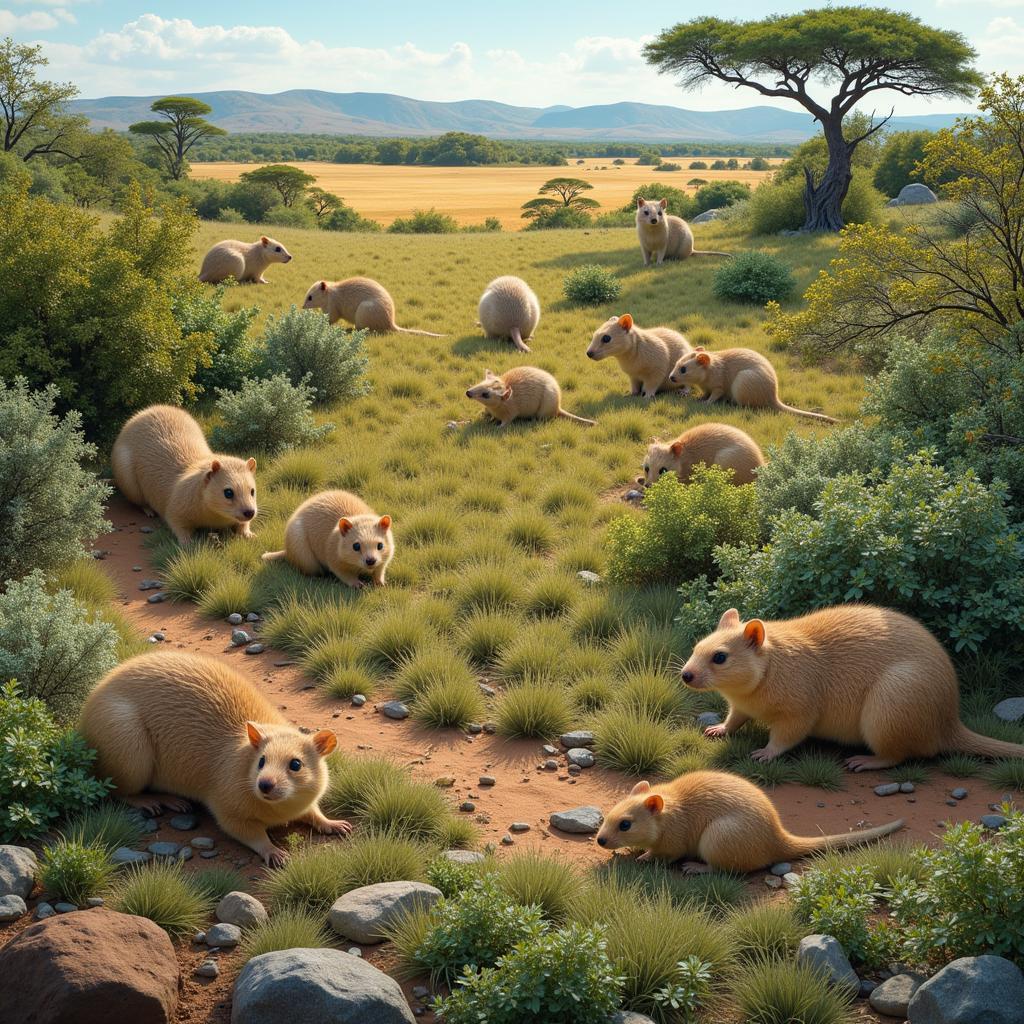Exploring the African Dormouse: A Tiny Treasure of the African Continent
The African Dormouse, a small rodent native to sub-Saharan Africa, is a fascinating creature with unique characteristics and a rich history intertwined with the diverse ecosystems of the continent. These tiny mammals, often overlooked, play a vital role in their environment and offer a glimpse into the intricate web of life found across Africa.
Unveiling the Secrets of the African Dormouse
African dormice are not true dormice, but belong to the family Nesomyidae, a group of rodents endemic to Africa and Madagascar. They are more closely related to other African rodents like the climbing mice and rock rats than to European dormice. This distinction is crucial for understanding their evolutionary history and ecological niche.
Physical Characteristics and Adaptations
These small rodents are typically nocturnal, possessing large eyes and long whiskers that aid in navigating their environment in low-light conditions. Their soft fur ranges in color from reddish-brown to grayish-brown, providing camouflage amidst the leaves and branches of their arboreal habitat. Perhaps their most distinguishing feature is their long, often prehensile tail, which allows them to deftly maneuver through the trees.
Habitat and Distribution
African dormice are found in a variety of habitats across sub-Saharan Africa, from woodlands and savannas to forests and even mountainous regions. Their adaptability allows them to thrive in diverse ecosystems, contributing to the biodiversity of these regions.
 African Dormouse Habitats
African Dormouse Habitats
Diet and Ecological Role of the African Dormouse
What does an African dormouse eat? Their diet primarily consists of fruits, seeds, insects, and occasionally small vertebrates. As omnivores, they play a crucial role in seed dispersal and insect population control within their ecosystems.
Predators and Threats
Like many small mammals, African dormice face numerous predators, including snakes, owls, and other carnivorous animals. Habitat loss and fragmentation due to human activities pose a significant threat to their populations.
Conservation Efforts and the Future of the African Dormouse
While not currently classified as endangered, ongoing research and monitoring are crucial to understanding the long-term health and stability of African dormouse populations. Protecting their habitats and promoting sustainable land management practices are essential for ensuring their survival.
The Importance of Understanding African Dormice
Studying these fascinating creatures not only provides valuable insights into the intricate workings of African ecosystems but also underscores the importance of biodiversity conservation for the health of our planet. Dr. Asante Sanaa, a renowned expert in African mammalogy, explains, “Understanding the role of even the smallest creatures, like the African dormouse, is crucial for comprehending the complexities of ecosystem dynamics.”
Professor Adebayo Ojo, an ecologist specializing in African biodiversity, adds, “The African dormouse serves as a reminder of the interconnectedness of life and the importance of preserving the delicate balance of nature.” Dr. Sanaa further emphasizes, “By protecting the habitats of these small mammals, we contribute to the overall health and resilience of the entire ecosystem.”
Conclusion: Appreciating the African Dormouse
The African dormouse, though small in stature, plays a significant role in the vibrant tapestry of African wildlife. Further research and conservation efforts are essential to ensure the continued survival of this fascinating creature and the preservation of its diverse habitats for generations to come.
FAQ
- What is the lifespan of an African dormouse? They typically live for 2-3 years in the wild.
- Are African dormice kept as pets? While not common, they can be kept as exotic pets with proper care and attention.
- What is the scientific name of the African dormouse? Several species exist, each with its own scientific name, such as Graphiurus murinus (the common African dormouse).
- How do African dormice communicate? They primarily communicate through vocalizations and scent marking.
- What is the role of the African dormouse in seed dispersal? They consume fruits and seeds, then disperse them through their droppings, contributing to plant regeneration.
- How can I contribute to African dormouse conservation? Supporting organizations dedicated to habitat preservation and wildlife conservation in Africa can make a difference.
- Where can I find more information about African dormice? Reputable scientific journals and wildlife conservation websites are excellent resources.
Need assistance? Contact us 24/7: Phone: +255768904061, Email: kaka.mag@gmail.com, or visit our office: Mbarali DC Mawindi, Kangaga, Tanzania.

